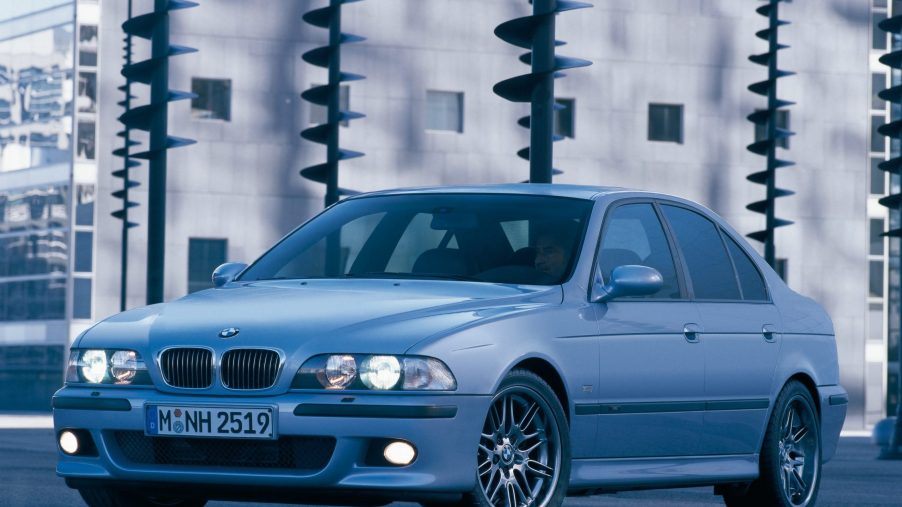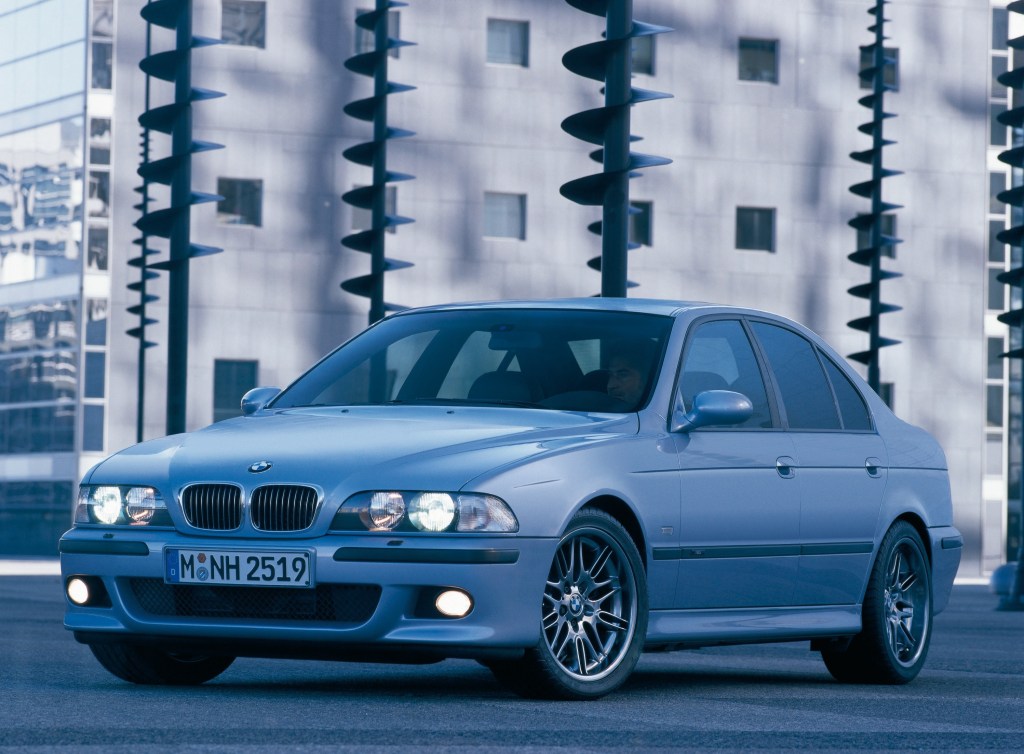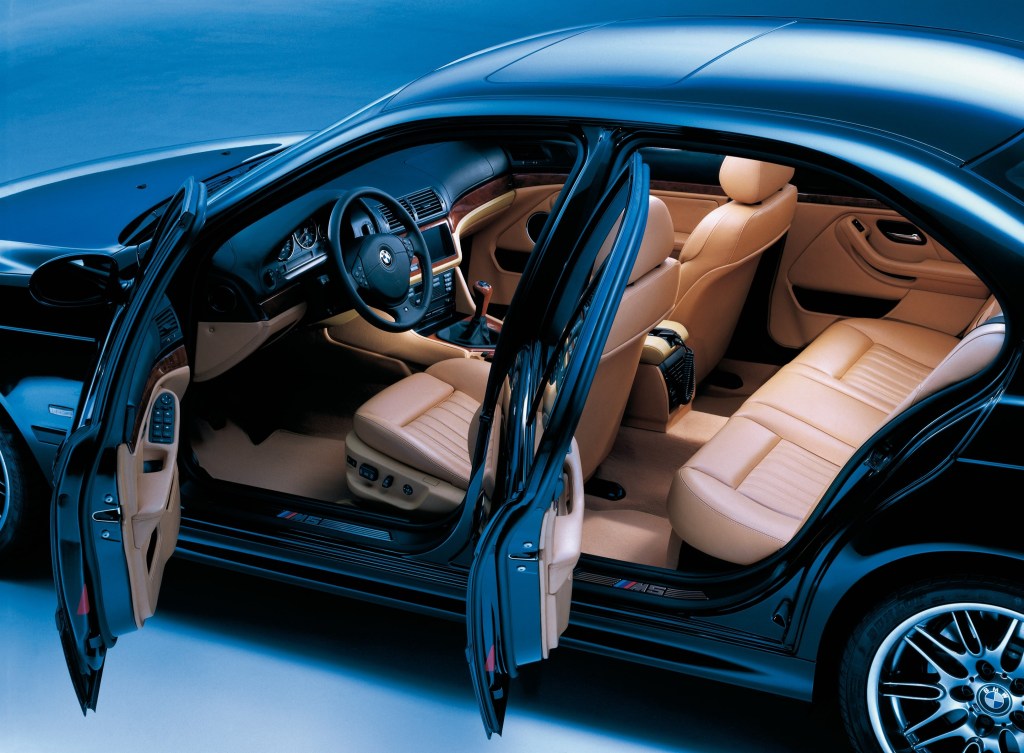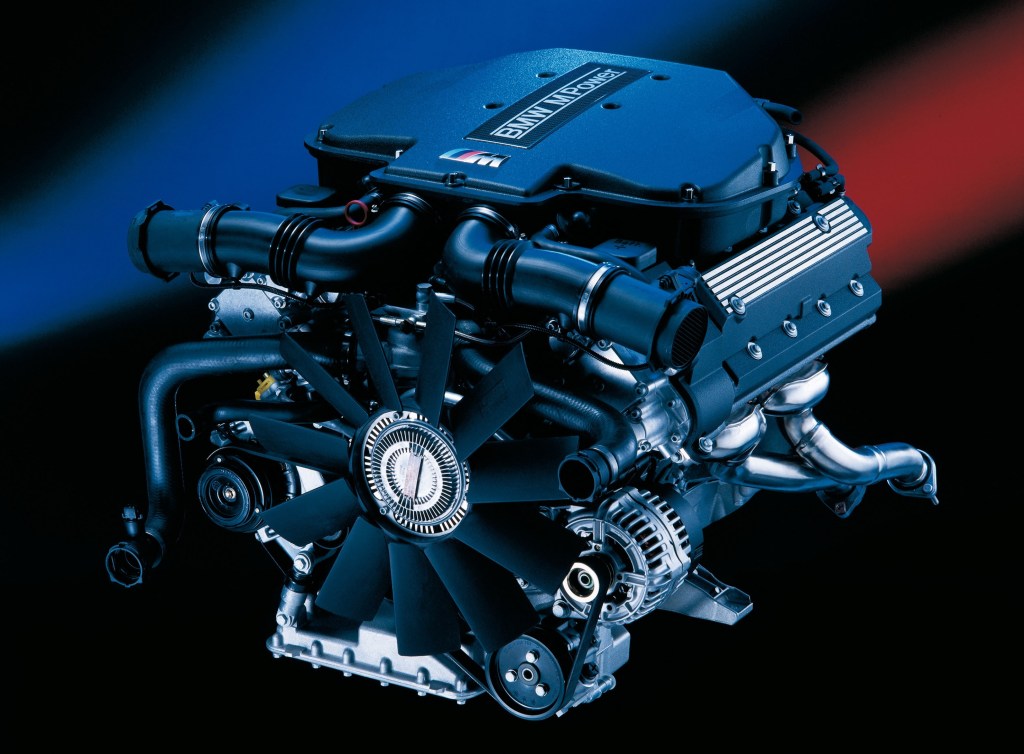
E39 BMW M5 Buyer’s Guide: Still a Super Sports Sedan
2000-2003 E39 BMW M5 buying guide highlights:
- Enthusiasts often consider the E39 M5 to be one of the best-handling sedans ever, not to mention a BMW high-water mark
- These cars are 20-odd years old now, so they have some issues that need addressing, but are generally stout, especially the 2001-2003 ones
- Although you can still find E39 M5s for around $30K, many command prices at least twice as high
There aren’t many sedans that can hang with the supercar crowd, but the BMW M5 is one of them. That’s been true ever since the E28 M5 first stormed the autobahn with a supercar-derived engine. And the current-gen version, particularly in CS trim, keeps that performance flame burning. But for many, neither captures the ultimate 5 Series model’s spirit at its most, um, ultimate. Instead, if you’re searching for the BMW M5’s zenith, you need an E39 M5.
The E39 M5 is a four-door supercar from BMW’s golden era

| 2000-2003 ‘E39’ BMW M5 | |
| Engine | 4.9-liter ‘S62’ V8 |
| Horsepower | 394 hp |
| Torque | 369 lb-ft |
| Transmission | Six-speed manual |
| Curb weight | 3792 lbs |
| 0-60 mph time | 4.8 seconds |
If you were a BMW fan in the 1990s and early 2000s, you were living it up. The German automaker was on a roll, releasing cars like the E46 M3, the M Coupe, and the Z8. But the E39 M5 stands tall even amongst these high points.
Although it broke M car tradition by ditching the inline-six for a V8, the E39 M5 is otherwise an exemplary distillation of the performance division’s recipe. On the surface, the 2000-2003 M5 looks little different from a standard E39 5 Series. The only significant changes, if you can call them that, are quad exhaust pipes, M5-specific wheels, a lip spoiler, different side mirrors, and some grille tweaks, Road & Track says. And inside, the only cues are an M steering wheel, sportier seats, and some M-badged pedals, door sills, gauges, and a light-up shift knob.
Underneath, though, things are noticeably different. Although the E39 M5 borrows its aluminum-intensive suspension design from the 5 Series, it has stiffer sway bars, upgraded bushings, and different shock valve and spring settings. Also, it gets a few upgraded components from the E38 7 Series. In addition, it has a standard limited-slip differential and a stouter version of the regular E39’s six-speed manual.
But BMW didn’t solely focus on performance with the E39 M5. As the range-topping 5 Series model, the M5 got some sweet luxury features, especially the North American versions. In the US, it came standard with leather upholstery, navigation, heated seats, and Xenon headlights, R&T notes. And as part of its 2001 facelift, the M5 gained a bigger infotainment screen, new headlights, front parking sensors (2000-MY was rear-only), and more airbags.
Even today, this luxury sports sedan feels super to drive

By modern standards, 394 hp doesn’t sound like a lot. The current Mustang Mach 1, for example, makes 480 hp with its 5.0-liter V8. But in 2000, near-400 hp from a sedan was mind-boggling. Plus, even after Mercedes-Benz one-upped the E39 M5 in raw speed and power with the E55 AMG, the BMW more than held its own. And that’s because of how it drives, Hagerty says.
Simply put, the E39 BMW M5 is often hailed as the best-driving sedan in the world. It still feels “stout and athletic” today, Hagerty reports, with an incredible sense of poise and balance. And as with the Miata, its bit of body roll enhances rather than detracts the driving experience, R&T says. Yet even though it’s a sharp and stable sports sedan, it still rides comfortably and smoothly. Also, its clutch delivers more feedback than anything BMW currently offers, R&T notes.
Speaking of comfort, the E95 M5’s interior is a nice place to sit, thanks to supportive seats and high-quality materials. Like its descendants, it can handle everyday commuting with aplomb. But it can switch into canyon-carving mode just as easily. And not only does its S62 V8 rev to 7000 RPM, but it’s incredibly smooth on the way. Plus, thanks in part to its individual throttle bodies, its exhaust note is just as creamy as its power delivery.
No wonder Hagerty calls this car “peak BMW.”
Is the E39 BMW M5 a reliable near-classic sports sedan?

Today, the E39 M5 is approaching classic-car age. As a result, age has taken its toll on many examples’ rubber, plastic, and electrical components. One R&T writer ran into that last issue with their 190,000-mile 2002 M5 and saw actual flames. Though to be fair, 190k is a lot of miles for practically any car.
So, does this mean that every 2000-2003 BMW M5 is a basket case waiting to happen? In short, no. But that’s provided you maintain it properly and keep a few things in mind.
Common 2000-2003 M5 problems
Although the S62 V8 isn’t bulletproof, it’s based on another reliable BMW engine, the M62 V8. In addition, unlike the E60 M5’s V10 engine, the S62 V8 rarely suffers rod-bearing failure, R&T says. It’s still worth getting an oil analysis just in case, though, because repairs get costly quickly.
A more serious issue, though, is the timing chain’s tensioner guides. They’re plastic, so they wear and crack over time. The chain itself often lasts 150,000 miles, BMW Tuning claims, but the guides need to be replaced before then. Luckily, there are more durable replacement parts available these days.
As far as other engine-specific issues, the E39 M5 is a typical older BMW. That means failing VANOS components and oil leaks, particularly from valve-cover gaskets. Both are age-related issues and not unique to the S62. And while replacement VANOS units are often pricey, rebuilds are noticeably cheaper, BMW Tuning says. Also, early S62s often consume more oil as a matter of course.
On that note, it’s worth noting that BMW updated more than the E39 M5’s looks in 2001. It also installed different piston rings to reduce oil consumption, added a VANOS shut-off valve to reduce noise and oil loss, switched the recommended oil, and widened the V8’s air passages, Hagerty reports. That last tweak aimed to reduce carbon buildup, which is a common S62 issue. However, it’s not unique to it or BMW. And removing carbon deposits isn’t particularly difficult or expensive for a mechanic.
But are these issues deal-breakers? If they’re caught in time, not really. That’s why a pre-purchase inspection is recommended before putting any money down. Do that, and you shouldn’t have any unwelcome M5 surprises.
How much does an E39 M5 cost today?
Once upon a time, the E39 M5 was a fairly affordable BMW M car. But apart from high-mileage examples, that’s not the case anymore, especially for the more desirable 2001-2003 models.
While a good-condition 2000 M5 typically costs around $30K, a 2001 example in the same condition costs $35K, Hagerty reports. And a 2003 M5 is more like $42,000 in that state. If you want an excellent-condition one, double those numbers. Some refreshed, near-pristine E39 M5s even command six-figure sums.
For any other 20-odd-year-old sedan, that might sound egregious. But then, this is a super sedan.
Follow more updates from MotorBiscuit on our Facebook page.


